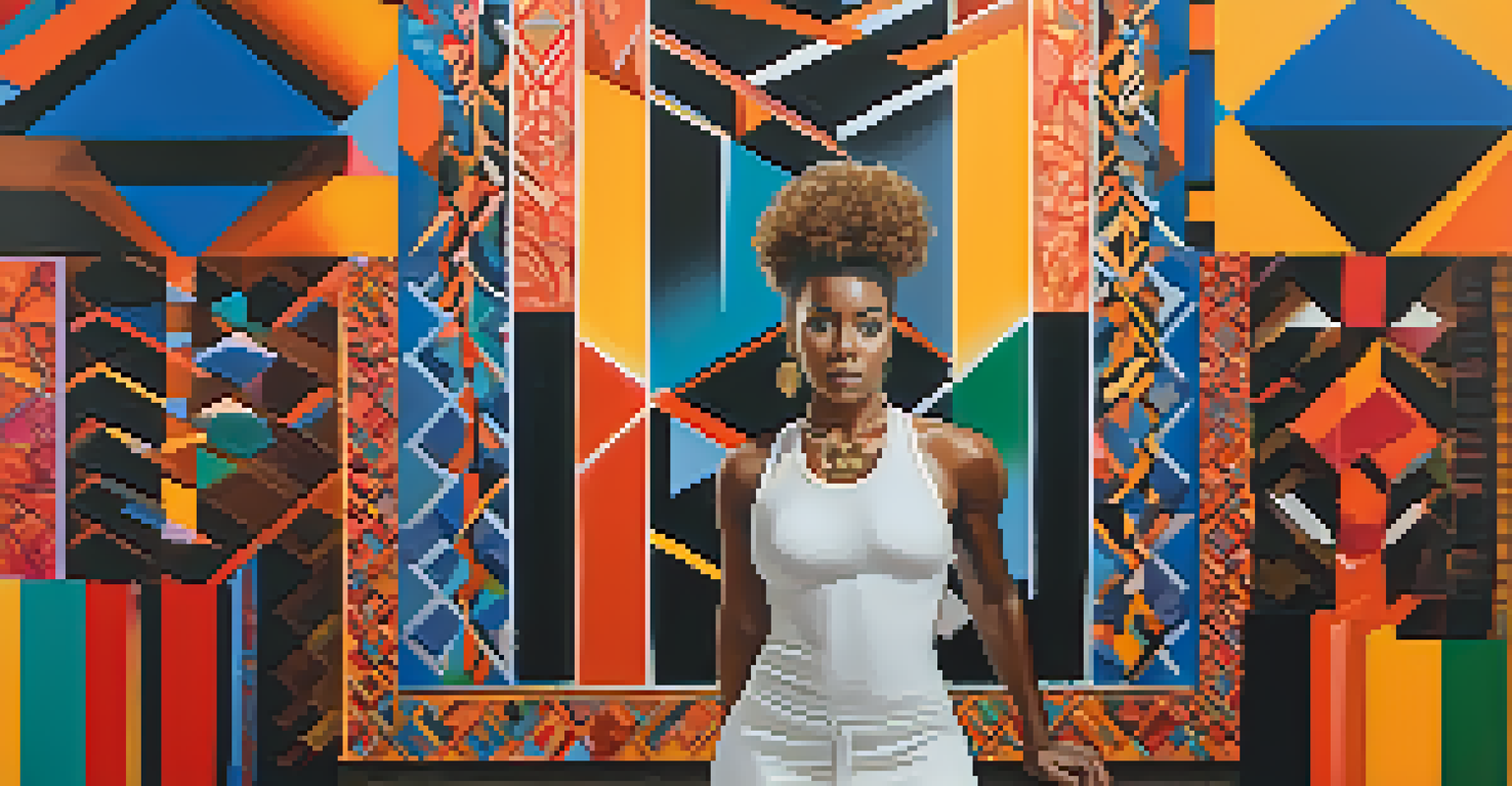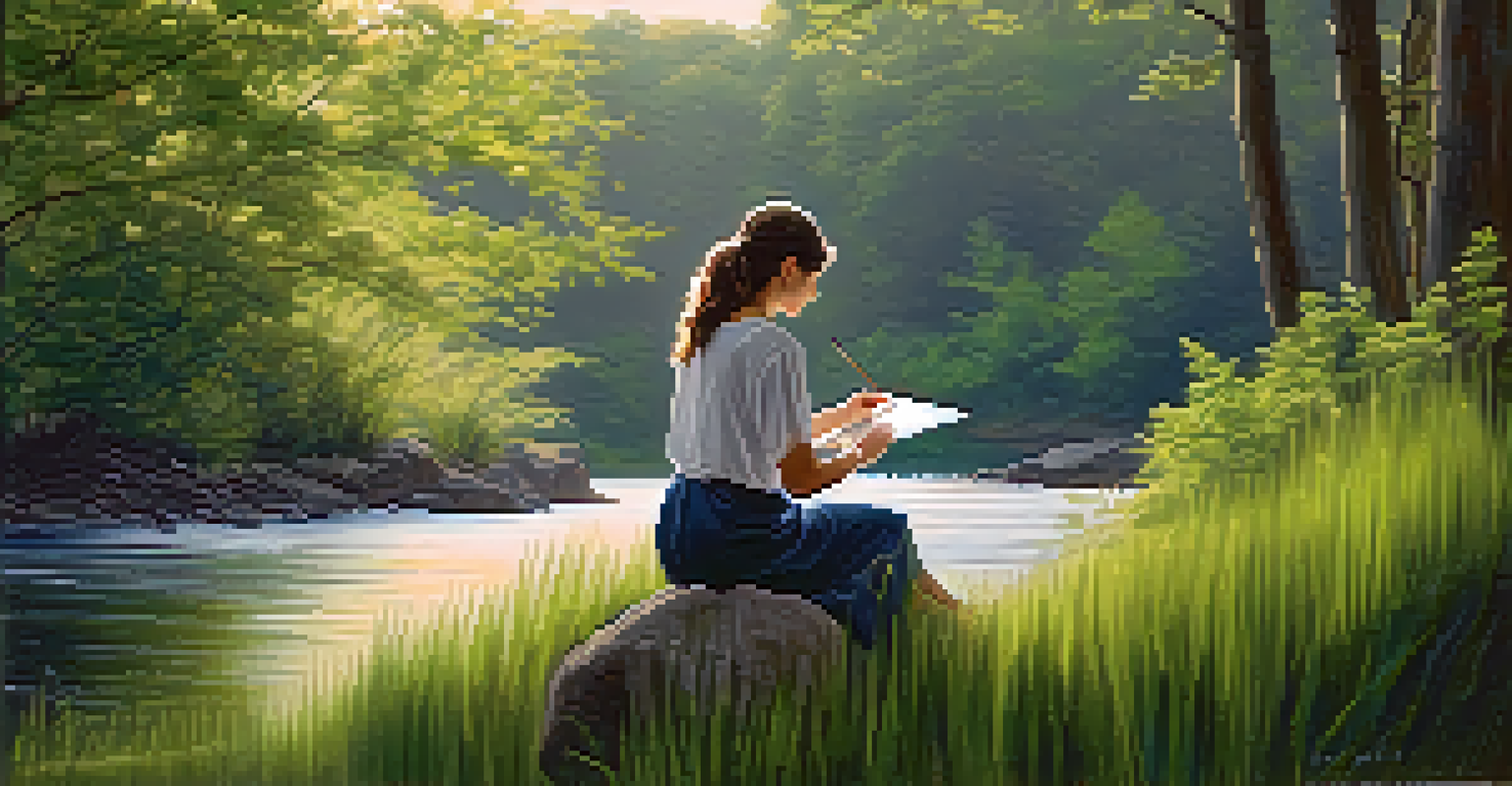The Impact of Gender on Artistic Expression in Modern Paintings

Understanding Gender's Role in Art History
Art has long been a reflection of societal norms, and gender plays a significant role in this dynamic. Historically, male artists dominated the scene, which influenced the themes and perspectives portrayed in their works. However, as gender discussions evolved, more female and non-binary artists began to emerge, bringing diverse narratives to the forefront.
Art enables us to find ourselves and lose ourselves at the same time.
This shift is crucial because it highlights how different experiences shape artistic expression. For instance, while male artists might explore themes of power and conquest, female artists frequently delve into personal experiences, emotions, and domestic life. This contrast enriches the art world, making it more inclusive and representative of various viewpoints.
Moreover, the rise of feminist art movements in the late 20th century challenged traditional representations and demanded equal recognition for women artists. This transformation not only opened doors for female artists but also encouraged a broader conversation about the intersection of gender and creativity.
Contemporary Gender Dynamics in Art
In today’s art scene, gender dynamics continue to evolve, often challenging previously held stereotypes. Many contemporary artists use their work to explore and critique gender roles, identity, and societal expectations. This push against the status quo allows for a more nuanced understanding of gender in art.

For example, artists like Yayoi Kusama incorporate themes of femininity and mental health into their vibrant, immersive installations. Her unique perspective showcases how personal experiences related to gender can influence artistic style and subject matter. This trend is not limited to female artists; male artists are also increasingly engaging with themes of vulnerability and emotional depth.
Gender Diversity in Art
The emergence of female and non-binary artists enriches the art world by introducing diverse narratives and perspectives.
Additionally, non-binary and gender-fluid artists are gaining visibility, further diversifying the conversation around gender in art. Their work often defies traditional categorizations, prompting viewers to rethink what gender means in relation to artistic expression.
Artistic Techniques and Gender Perspectives
The techniques employed by artists can also reflect their gender perspectives. For instance, women artists might lean towards softer, more emotional palettes or materials that resonate with their experiences. In contrast, male artists may gravitate towards bold colors and structural forms, influenced by societal expectations of masculinity.
The role of the artist is to make the revolution irresistible.
However, these are general trends and not hard rules. Many artists cross these boundaries, mixing techniques and materials to create unique expressions of their identities. This blending of styles challenges the notion that certain techniques are inherently tied to gender, ultimately enriching the artistic landscape.
Take the example of Georgia O’Keeffe, whose floral paintings combine traditional feminine subjects with powerful, sweeping forms. Her ability to manipulate technique and form illustrates how gender can inform, but not limit, an artist's expression.
Cultural Contexts and Gendered Artistic Expression
Cultural backgrounds significantly influence how gender impacts artistic expression. In many cultures, gender roles dictate the subjects artists choose and the methods they employ. For example, in some Indigenous communities, women artists often explore themes related to family and community, which are integral to their cultural identity.
Conversely, in cultures where gender norms are more rigid, artists may feel restricted in their expression. This constraint can lead to innovative ways of conveying messages, as artists find subtle methods to challenge societal expectations. For instance, artists from conservative backgrounds might use symbolisms that resonate with their communities while pushing against traditional narratives.
Intersectionality Matters
Considering intersectionality in artistic expression reveals the complex interplay of various identities, enhancing our understanding of art.
Thus, cultural context not only shapes the themes artists explore but also how they express their gender identity through their work. This interplay creates a rich tapestry of perspectives, adding depth to the modern art scene.
The Role of Gender in Art Criticism
Gender biases in art criticism can significantly shape how artworks are perceived and valued. Historically, women artists have faced greater scrutiny and often received less recognition than their male counterparts. This disparity can influence the narratives surrounding their work, making it essential to critically examine the lens through which art is evaluated.
For instance, when a male artist depicts violence, it is often viewed as a commentary on society; however, similar themes in female artists' works might be dismissed as mere emotional outpourings. This inconsistency highlights the need for a more equitable approach to art criticism that acknowledges the diversity of voices and experiences in the art world.
As conversations around gender equality progress, there's a growing movement to address these biases in art criticism. Advocates argue for a more inclusive evaluation that considers the artist's intent, background, and the societal context of their work, ultimately leading to a richer understanding of modern artistic expression.
Intersectionality in Artistic Expression
When discussing gender in art, it's essential to consider intersectionality—the idea that various social identities, like race, sexuality, and class, intersect and impact individuals' experiences. This framework broadens our understanding of how artists express their identities and challenges the simplistic notion of gender as a singular category.
For example, Black female artists often navigate both race and gender in their work, creating pieces that reflect their unique experiences. Artists like Kehinde Wiley challenge traditional portraiture by placing Black subjects in powerful, heroic poses, thereby reclaiming narratives often denied to them. This intersectional approach allows for deeper conversations about representation and identity.
Evolving Art Criticism
Critiques of artwork must evolve to recognize gender biases and ensure a more equitable evaluation of all artists' contributions.
Acknowledging intersectionality in artistic expression not only enriches the art world but also fosters empathy and understanding among audiences. It encourages viewers to appreciate the complexities of identity and how they manifest in various art forms.
The Future of Gender and Artistic Expression
Looking ahead, the future of gender in artistic expression promises to be vibrant and multifaceted. As societal norms continue to shift, artists will likely explore new themes and narratives that reflect ongoing conversations about gender identity and representation. This evolution opens up exciting possibilities for innovative art forms and collaborations.
Moreover, with the rise of digital platforms, artists from diverse backgrounds can share their work with global audiences. This accessibility fosters a richer exchange of ideas and perspectives, further challenging traditional notions of gender in art. Social media, for instance, has allowed marginalized voices to gain visibility, amplifying their contributions to the art world.

Ultimately, the intersection of gender and artistic expression will continue to evolve, driven by the artists who dare to challenge conventions and explore their identities. As we embrace this evolution, we can look forward to a more inclusive and dynamic art landscape that honors the complexity of human experience.